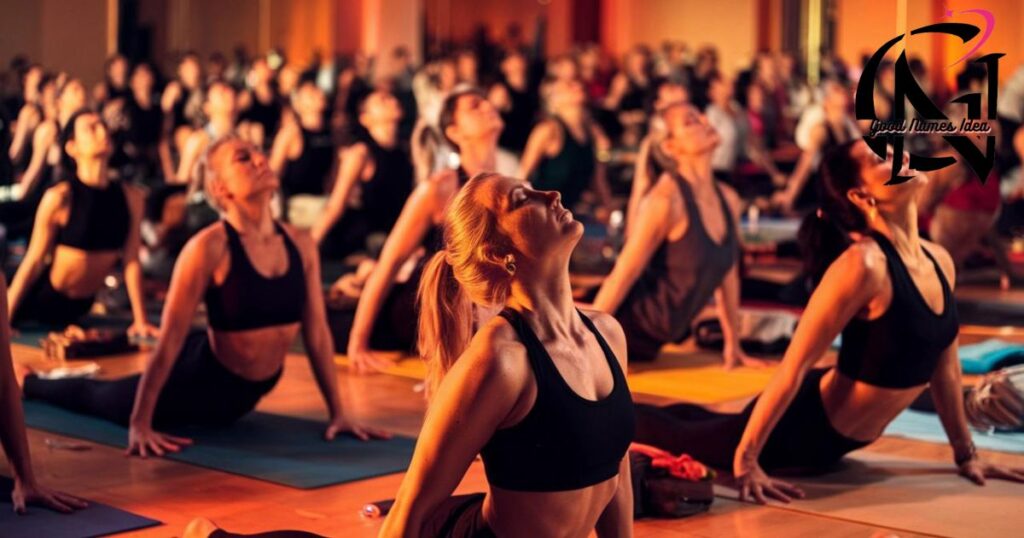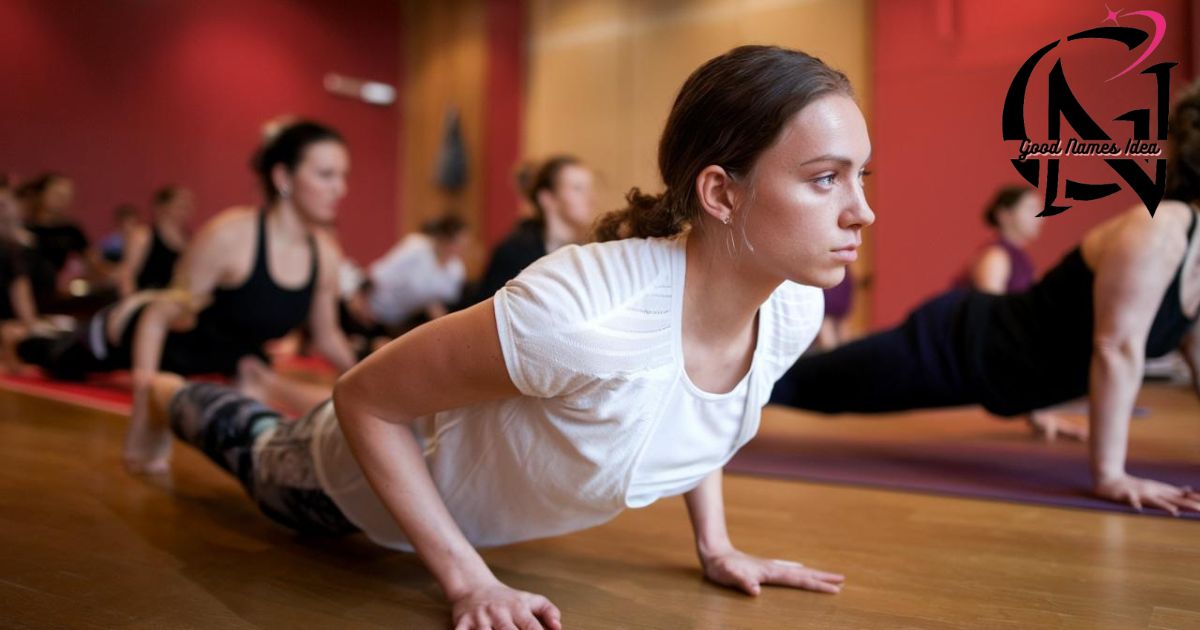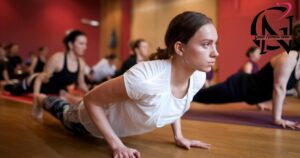Hot yoga is a trending fitness practice that combines traditional yoga poses with the added challenge of performing them in a heated room. It’s known for its numerous physical and mental health benefits, from increased flexibility and strength to improved cardiovascular health and stress reduction. If you’re curious about hot yoga,
how it works, or want to try it for yourself, you’ve come to the right place! In this comprehensive guide, we’ll cover everything you need to know about hot yoga, including its benefits, tips for beginners, common poses, and much more.
What is Hot Yoga?
Hot yoga refers to various styles of yoga performed in a heated environment, typically ranging from 85°F to 105°F (29°C to 40°C). The high temperature is designed to simulate the climate of India, where traditional yoga originated, and to help practitioners deepen their stretches while promoting sweating for detoxification.
Unlike traditional yoga, hot yoga sessions usually take place in heated rooms and involve a sequence of poses linked with controlled breathing. The heat makes muscles more pliable, allowing for better flexibility and a more intense workout. Some popular hot yoga styles include Bikram yoga, power yoga, and Vinyasa yoga.
Benefits of Hot Yoga
Hot yoga offers a unique combination of physical and mental benefits, making it a popular choice for fitness enthusiasts. Here are some of the top benefits you can expect:
a) Increased Flexibility
The heat helps loosen muscles, allowing you to move deeper into stretches and improve your range of motion over time.
b) Enhanced Strength and Balance
Hot yoga poses challenge your muscles and require balance, which builds strength, especially in the core and lower body.
c) Better Cardiovascular Health
Performing yoga in a heated environment increases your heart rate, providing a cardiovascular workout that burns more calories compared to regular yoga.
d) Detoxification
Sweating in a hot yoga session helps your body release toxins, leaving you feeling refreshed and cleansed.
e) Improved Mental Focus and Stress Relief
The challenging environment requires concentration and mental resilience, promoting mindfulness and reducing stress levels.
f) Promotes Weight Loss
Hot yoga can aid in weight loss by boosting metabolism and burning calories, especially if practiced regularly.
Hot Yoga vs. Bikram Yoga
Many people confuse hot yoga with Bikram yoga, but they have key differences. Bikram yoga is a specific style of hot yoga that follows a set sequence of 26 poses and two breathing exercises. It is always practiced in a room heated to exactly 105°F (41°C) with 40% humidity.
Hot yoga, on the other hand, can include various styles and sequences, allowing for more flexibility and creativity. The room temperature and humidity levels also vary based on the studio and instructor’s preference. While Bikram yoga classes are more structured, hot yoga classes tend to be more diverse and less rigid.
Is Hot Yoga Safe?

For most people, hot yoga is safe when practiced with caution. However, it may not be suitable for everyone, particularly those with certain medical conditions like heart disease, heat intolerance, or pregnancy. If you’re new to hot yoga or have underlying health concerns, consult with a healthcare professional before starting.
Safety Tips:
- Stay Hydrated: Drink plenty of water before, during, and after class to prevent dehydration.
- Listen to Your Body: If you feel dizzy or lightheaded, take a break or step out of the room to cool down.
- Start Slowly: Gradually acclimate your body to the heat by attending shorter sessions first.
Preparing for Your First Hot Yoga Class
Getting ready for your first hot yoga class can be intimidating, but with the right preparation, you’ll be set for success. Here’s what you need to know:
a) Hydration
Drink plenty of water throughout the day before your class. Proper hydration helps you cope with the heat and minimizes the risk of dizziness or dehydration.
b) Light Meals
Eat a light meal 2-3 hours before class. Avoid heavy or greasy foods that could make you feel sluggish.
c) Clothing
Wear moisture-wicking, lightweight clothing. Avoid loose or heavy fabrics that may become uncomfortable as you sweat.
d) Gear
Bring a non-slip yoga mat, a large towel (for both you and your mat), and a bottle of water. Some studios may provide this equipment, but it’s always good to have your own.
Hot Yoga Poses for Beginners
If you’re new to hot yoga, start with simple poses that help you build strength and flexibility without overexerting yourself. Here are a few beginner-friendly poses to try:
- Mountain Pose (Tadasana): This foundational pose improves posture and balance.
- Warrior I (Virabhadrasana I): Builds leg strength and stretches the shoulders and chest.
- Downward-Facing Dog (Adho Mukha Svanasana): Stretches the spine, hamstrings, and calves.
- Tree Pose (Vrksasana): Enhances balance and concentration.
- Child’s Pose (Balasana): A resting pose that relaxes the body and mind.
Tips for Practicing Hot Yoga
To make the most out of your hot yoga practice, follow these helpful tips:
- Arrive Early: Give yourself time to adjust to the heat before class starts.
- Focus on Breathing: Steady, controlled breaths will help you maintain endurance and stay calm.
- Pace Yourself: Don’t push your body too hard, especially if you’re new. Take breaks as needed.
- Use a Towel: A towel on your mat prevents slipping and improves grip during sweaty poses.
Common Mistakes to Avoid
Avoid these common mistakes to ensure a positive hot yoga experience:
- Skipping Hydration: Dehydration can lead to dizziness or nausea in a hot environment.
- Wearing Heavy Clothes: Opt for lightweight, breathable materials to stay comfortable.
- Ignoring Your Limits: Respect your body’s signals and modify poses if necessary.
What to Wear and Bring to a Hot Yoga Class
Knowing what to wear and bring can significantly enhance your comfort and performance during hot yoga. Here’s a quick checklist:
What to Wear:
- Lightweight, moisture-wicking clothes.
- Fitted shorts or leggings.
- Breathable sports bras or tank tops.
What to Bring:
- A non-slip yoga mat.
- A large towel (for sweat and your mat).
- A water bottle (insulated if possible).
- A change of clothes for after class.
Hot Yoga FAQs
Q1: How often should I practice hot yoga?
For beginners, 2-3 times a week is ideal. As you build endurance, you can increase frequency based on your goals.
Q2: Is hot yoga suitable for weight loss?
Yes, hot yoga can aid weight loss by increasing calorie burn and boosting metabolism.
Q3: What should I eat before hot yoga?
Consume a light meal 2-3 hours before class, such as fruits, a smoothie, or a small salad.
Q4: Can hot yoga improve flexibility?
Absolutely! The heat helps relax muscles, making it easier to move deeper into stretches.
Q5: How do I avoid dizziness in hot yoga?
Stay hydrated, breathe steadily, and take breaks when needed. If dizziness persists, consult your instructor.
Conclusion
Hot yoga is an invigorating practice that offers numerous health benefits, including increased flexibility, strength, cardiovascular health, and stress relief. Whether you’re a beginner or an experienced yogi, incorporating hot yoga into your fitness routine can transform both your physical and mental well-being. Remember to stay hydrated, listen to your body, and enjoy the process. Ready to give hot yoga a try? Grab your mat, towel, and water bottle, and step into the heated room to experience the power of hot yoga firsthand!











